Video Marketing | 6 Keys to a Plan That Works
Video marketing can be incredibly effective in helping to promote a product or service. The dynamic medium can increase reach and engagement across digital platforms, educate potential customers to move them through a conversion funnel, and answer questions to turn prospects into customers.
Video marketing is also usually expensive, which is a big reason why it can be so hard to do well. That’s why we’ve co-written this piece with Dan Helbling – owner of a small video production company – and developed 6 keys to a video marketing plan that works.
Let’s take a look at 6 video marketing keys to drive efficient and effective results.
Key 1: Know Your Audience
When it comes to video marketing, and really any form of communication, the first question is “who is the audience?”.
A video project can fit any number of marketing or business needs. It might be intended for potential investors. It could be an internal piece designed to help establish a specific element company culture. It could be intended to support an existing and successful product line with an aggressive new sales target, or it could be a new product launch targeting a new customer demographic. The audience can vary significantly across all of these options and therefore the content, tone, and general approach may also differ.
Building a rock solid understanding of audience at the beginning of the project can streamline planning efforts, promote alignment within the organization, save time, and keep costs down. Do this hard work first. The video team, digital agency team, and client need to be on the same page before the rest of the project begins. There are times when there may be multiple audiences for a single video project. That is fine. In this case, it’s still worthwhile to create a prioritized list of what audiences are most important.
View all future content planning discussions through the lens of your audience or audiences. Is the message compelling? Is the content useful, helpful, and interesting to the intended audience?
Practical tips: Create an audience brief at the beginning of the project that details the prioritized audience or audiences. Note what the goal is for each of these audiences and describe their needs. Share this document for review and approval with all stakeholders before the project proceeds.
Explore what the competition is doing in terms of video marketing (check YouTube, web site, and content on social platforms) to see what is performing well.
Remember that you won’t be able to force anyone to watch your video. Instead, you will need a distribution plan that to get your content in front of the right eyeballs. Consider your audience within the context of how you’ll be best able to connect with that audience.
Key 2: Keep Video Production Costs Low!
Did we mention that video marketing can be expensive?
It’s true! The cost of video production is a common problem for clients, especially when working with a full service agency that has video production capabilities in house. For clients that do choose to invest in video, the task of generating ROI from video marketing can be high when the “I” is big! Keeping the investment as low as possible provides flexibility and makes it easier for all parties to show a positive return on the project.
From the perspective of a full service digital agency with in-house overhead of equipment and human capital, they need to either keep that video team constantly busy or charge high enough rates to cover potential losses from downtime. Because it can be so expensive for a digital agency to maintain in-house capabilities, video work is often outsourced to dedicated production agencies that carry their own overhead. This can make resource planning more efficient for the digital agency and the video production team, but it can still be expensive for the client. That’s because the digital agency will typically add a fee of 30% or more of the total production cost. This cost covers collaborative planning with the video team and all of the time managing the process with the client. In these cases, there’s typically more time (and therefore cost) that goes into communications because the agency work is being led by someone who is not a video expert.
Our goal is always to keep our own overhead as low as possible so we can keep our prices as low as possible. This means no fancy offices for us and a strict commitment to solid up front planning to streamline time and expense. For a video marketing project, it also means working with a video production team that shares our commitment to low overhead and our belief in planning. In the case of Dan, we know he owns his own equipment and how he plans his production process and fees. Costs are broken down into shooting days and editing days.
Practical tips: When creating or reviewing a video production proposal, look for transparency in pricing. How are costs calculated and where are they going? Sometimes this can reveal process gaps that can be cleaned up to reduce costs. Plus, we think it always makes the process more enjoyable when everyone is on the same page about the line items in the budget.
Key 3: Know Where Your Final Video Will be Hosted
It’s helpful to think about this as a question with two major choices. The video can be hosted on the client’s own website or it can be hosted externally.
The biggest benefit to web site hosting is that the video can directly help on site SEO and drive inbound organic traffic. The biggest downside to web site hosting is that video files can be large and bulky and can bog down site load times.
The biggest benefit to external hosting is that another server (a larger, more powerful server) is handling the large file size of the video. The downside is that there is not a direct, on-site SEO benefit from the video content. We recommend this second option in almost all cases. This is because the downside is not much a downside at all when the video is hosted on YouTube.
YouTube is the second largest search engine in the world, and in a digital world where video is increasingly important, we love the idea of developing a strong presence in the most important platform. This is especially true since consumers often search in multiple places when researching a new product or service. According to 2019 Google data, over 55% of people who search for a product on Google head to YouTube afterwards to learn more. The connection between search and video search is strong.
Practical tips: Consider the goals of your video marketing efforts in terms of your overall SEO and inbound strategy. Specifically, consider the pros and cons of driving inbound traffic directly to the site vs. an external destination like a YouTube channel. In almost all cases, we believe the best decision is to host the video on YouTube and eliminate the risk of a slow site and the corresponding negative page-load impact on SEO performance.
Key 4: For YouTube Hosting, Create a YouTube Brand Account
If you decide to host the video on your own site (or use another third party video host like Vimeo), you can skip directly to Key 5. Otherwise, read on below for how to create a YouTube brand account. A Brand Account allows multiple users to log in to the YouTube Channel instead of everyone sharing one single login.
- Log in to YouTube
- Once logged in, go to www.youtube.com/account
- Under the “Your account” section, click on the hyperlinked text that reads, “See all my channels or create a new channel”.
- You’ll see something that looks like this:

- Hit the large “+” icon in the top left of the page to “Create a new channel”. You’ll see this screen below.

- Enter the name of your new Brand Account. This will be the name that visitors to your YouTube Channel see. Hit the blue “Create” button and add a brand image for your Brand Account. That’s it! You now have a Brand Account to use.

- Use the “Manage Permissions” functionality to make sure the right stakeholders have the proper access level within the account.
Practical tips: If you’re going to be using YouTube at all, we believe the best and easiest approach is to use a Brand Account. There’s a lot of upside and no downside. Follow the steps outlined in this section and set one up!
Key 5: Optimize Your YouTube Video Content for Keywords
Just as there are principles for SEO copywriting, there are best practices for extracting maximum SEO value from video content on your YouTube channel.
The primary places to optimize content for your targeted keyword include: the video title, the video description, and the language within the video. For YouTube specifically, here are a few simple things to do:
- Use your target keyword in filename of the video. So stay away from generic language like myfinalvideo_reallyfinal.mov and optimize that filename for your topic! And fun fact: the most popular video file types that are YouTube compatible are MOV, MP4, and WMV.
- Use the target keyword within the title of the video. From a length standpoint, think about this in a similar way to a title tag on a web page. Aim for roughly 60 characters.
- Use the target keyword within the description of the video. You can use up to 1,000 characters but keep in mind that YouTube will only display the first couple lines of text, or about 10% of the total allowable space.
- Use tags related to your topic to help increase visibility. Tags help YouTube understand what your video is about and are used in its algorithm when deciding how to associate your video with other content on the platform.
- Add a category to your video. After you’ve uploaded a video file to YouTube, it’s possible to use “Advanced settings” to categorize the video.
- Use a custom thumbnail image for the link to your video. According to Google’s internal documents, 90% of the best performing videos on YouTube have a custom thumbnail. Your custom thumbnail should have a 16:9 aspect ratio (1280 pixels x 720 pixels is perfect), and should be 2MB or less as either a .jpg, .gif, .bmp, or .png.
- Please note, the YouTube account needs to be verified in order to upload a custom thumbnail. Instructions for the verification process are at youtube.com/verify. Once you’re verified, you’ll see this message.

- Please note, the YouTube account needs to be verified in order to upload a custom thumbnail. Instructions for the verification process are at youtube.com/verify. Once you’re verified, you’ll see this message.
- Add subtitles and closed captions to your video file. Here’s how to do that:
- Once video has been uploaded, click on the “CC” button that is displayed below the video screen.
- Then, click the blue horizontal “Add new subtitles or CC” button at the top right of the page.
- You’ll see 4 options from YouTube on how to add CC, but generally the easiest is the second option down: “Transcribe and auto-sync”. With this option, you can type in (or paste in) your video transcript and YouTube will time the captions to display at the correct time on the screen.
- https://www.youtube.com/watch?time_continue=19&v=h-HlBPx8ek4
Practical tips: We love online search and everything from earning featured snippets to Local SEO to digital PR, so you’ll have to excuse our enthusiastic bias towards SEO. We believe all online content needs to be relevant, helpful, and authoritative in order for it to be generate ongoing inbound traffic. But high quality content is only the first step. Optimizing that content so it can be discovered and clicked is a critical part of the equation. Do the 7 recommendations outlined above and you’ll be well on your way to becoming a YouTube SEO pro.
Key 6: Get More From Video By Planning for Multiple Video Formats
The beauty of video marketing is that a project can be simple or complex, inspiring or factual, traditional or innovative, the list of options are endless. The open-ended nature of the medium makes diligent, up-front planning all the more important. And with proper planning the flexibility of video means that one production budget can often by used to create a number of deliverables in different formats.
Here’s an example. Say you are launching a new product in the market and are creating a 90 second video to establish the brand and explain what makes your new product unique. This kind of video might be perfect to play on loop at a trade-show or serve as the first video in your YouTube channel. You might also use it frequently in email marketing campaigns as a landing page when conducting outreach with potential customers.
A 90 second video, however, could be pretty terrible for the shorter attention spans of social media advertising or even in-stream YouTube ads. Instead of taking a one-size fits all approach, you could plan for these additional formats in the initial phases of your projects. This would allow your video production partner to plan a single shoot that would not only deliver the primary 90-second piece, but would also account for a 6-second YouTube bumper ad and a 15-second version for Facebook and Instagram. Below is an example of a video discovery ad for YouTube that can appear alongside YouTube search results, on the YouTube homepage, or next to related videos.
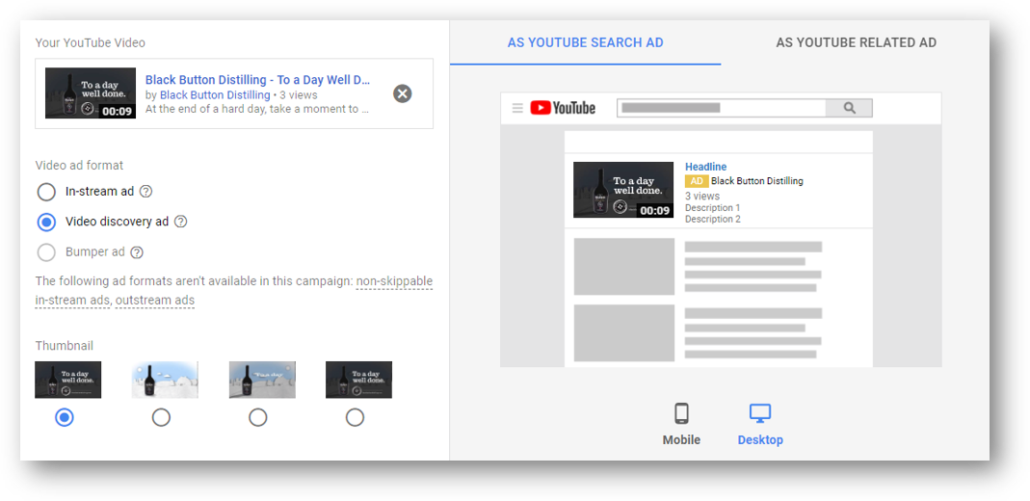
Practical tips: Think through all of distributions channels you have available and determine how many can make sense for video. At a minimum, we’d recommend using video in all of the “free” distribution platforms like Facebook, Instagram, Google My Business, and LinkedIn.
If you’ve created your YouTube Brand Account from item #4 above and you have a Google Ads account, we highly recommend creating some videos that you can use in advertising. Below are 2 more formats to consider, in addition to the video discovery ad shown above:
In-stream ad: An in-stream ad can play on YouTube, YouTube’s video partner sites, or on the Google Display Network and give viewers the option to skip the ad after 5 seconds. An in-stream ad must be longer than 11 seconds.
Bumper ad: A bumper ad is a short video that plays before, during, or after another video on YouTube or on the Google Display Network. Bumper ads are not skippable for viewers, but need to pack a concise message in a short window. They must be 6 seconds or less. Unlike some other media formats that can be purchased on a cost per view or cost per click basis, all bumper ads are bought solely on impression count.
Video Marketing Final Thoughts
Video marketing is not easy, and we generally wouldn’t recommend it for organizations that don’t have a good understanding of their goals. However, those organizations with a clear vision for their goals (or a willingness to develop those goals) can get a lot out of video. Having a plan, a savvy and efficient video production partner, and following these 6 keys can lead the way to video marketing success.
Root & Branch provides digital marketing services ranging from paid search to SEO to digital analytics to reputation management for B2C and B2B companies. Root & Branch is a certified Google Partner, a certified Yext partner, a BirdEye partner agency, and a certified Databox partner. Drop us a line to connect if you’re interested in a conversation about video marketing.
Dan Helbing can be reached at danhelbling@gmail.com and you can see some of his work at danhelbling.com. You can also find him on Instagram at @helbling.


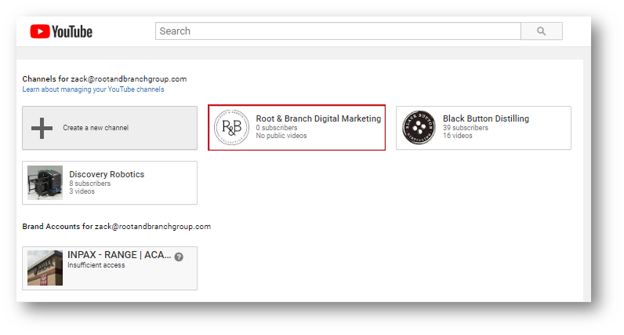
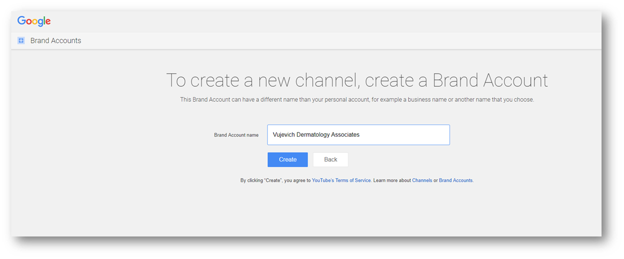
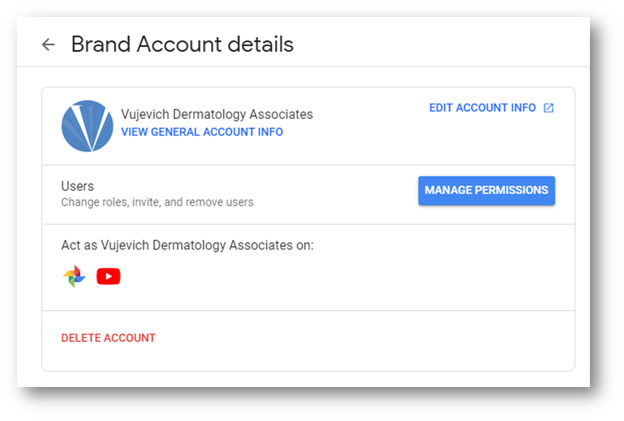
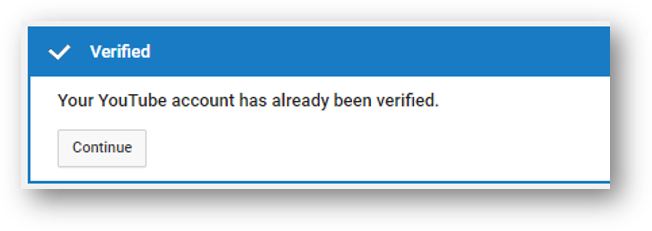



Leave a Reply
Want to join the discussion?Feel free to contribute!